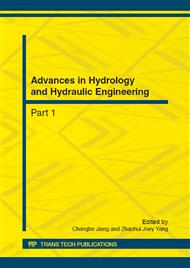p.821
p.826
p.831
p.835
p.841
p.846
p.853
p.859
p.863
A Discussion on the Differences between Arch Dam Design Standards of the United States, China and Vietnam
Abstract:
In arch dam design, every country has it own technical design standard. In Vietnam, the standard is far lessconprehensive compared with those of the United States and China. This research focus on analysis of the differences between three above standard systems, in order to give some suggestions to improve the Vietnamese standard for arch dam. Differnces in stability and strength analysis under static and seismic conditions is discussed in depth. A case study of Namchien arch dam in Vietnam, which has being constructed in Vietnam, is presented. The results show that if arch dam design based on the Vietnamese standard, stability and strength analysis should be paid more attention on the discussed differences. The research aims atcontributing constructive suggestions concerning to existing Vietnamese standard and providing some technical specifications for designer in arch dam design.
Info:
Periodical:
Pages:
841-845
Citation:
Online since:
October 2012
Authors:
Price:
Сopyright:
© 2012 Trans Tech Publications Ltd. All Rights Reserved
Share:
Citation:


